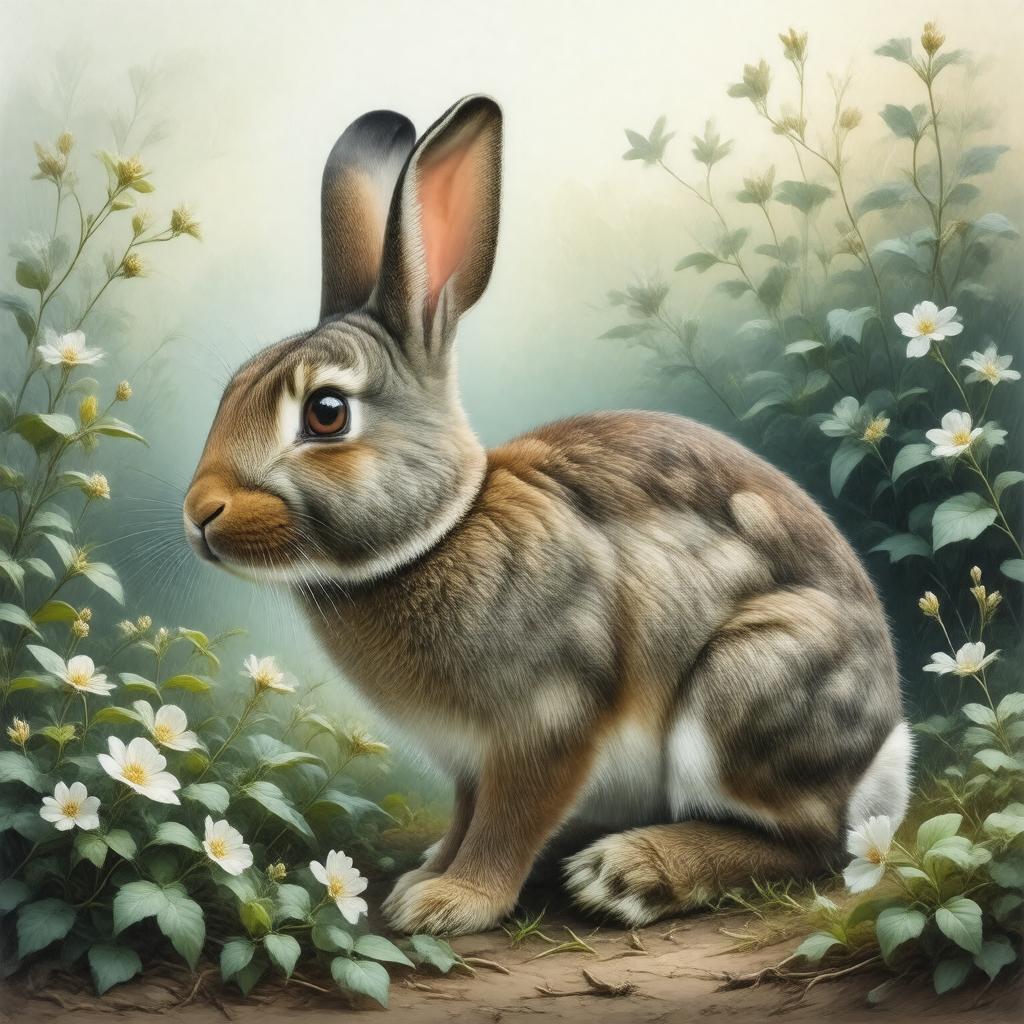Prompt
"Generate an image of a representative lagomorph, specifically a European rabbit, in a natural outdoor setting, showcasing its distinctive long ears, short tail, and hind legs longer than forelegs, surrounded by lush greenery and flowers, in a realistic and detailed style."

